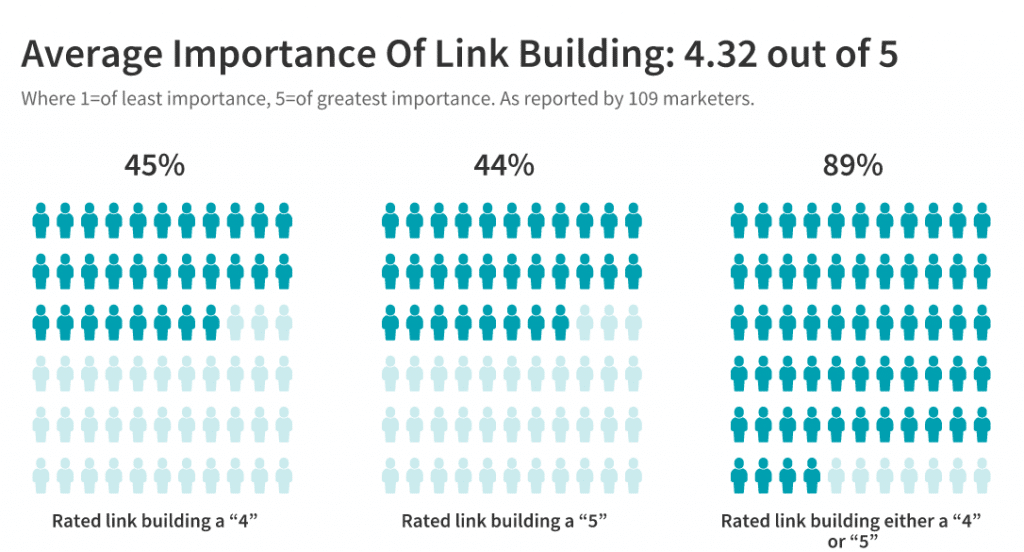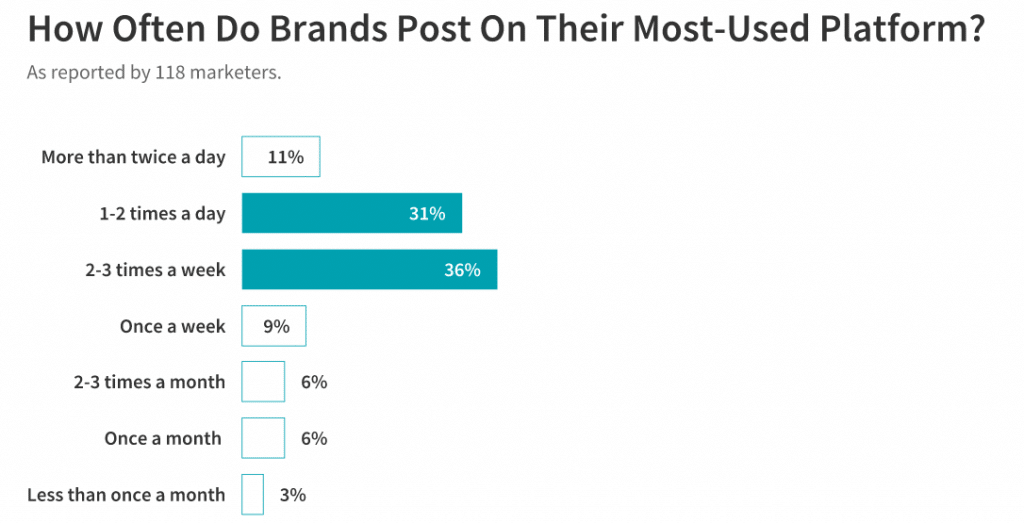Here at Referral Rock, roundups, or surveys of other marketers, are a regular part of our content mix.
These compilations of expert insights help us form relationships with other content creators and brands, and pick up new marketing tips and strategies. They also mutually increase blog and social media traffic for our own brand and our contributors’ brands.
Databox was one of the first pioneers of using roundups as a strategy for exchanging links, cultivating relationships, and boosting traffic. Now, countless other marketers and brands, including our own, use both creating and contributing to roundups as a proven content strategy – it works!
After writing 30 roundups (and counting) during my time here at Referral Rock, here’s what I’ve learned. I hope these tips will help you compile your own roundups and connect with other marketers.
Best practices for creating roundups
The roundups I create usually involve two sections: a statistical section with results of topical survey questions, and an insight section made up of organized responses to a long-form question.
If you’d like to see some examples of roundups I’ve created that follow this pattern, I’ve linked a few recent ones here.
- Developing A Consistent Brand Presence On Social Media
- Must-Have Content Strategies For Building Links
Below, I’ve shared my best practices for creating this type of roundup:
Choose topics you know will be of interest to your target audience, and of interest to the marketers you would like contributions from. What questions do your readers have that other marketers could help answer? What topics would marketers want to hear others’ opinions and perspectives on?
For example, if you don’t think many marketers (who will see your open survey) are currently running a successful loyalty program, don’t pick loyalty programs as a topic, as you won’t get enough responses. I learned that the hard way.
But roundup surveys on branding, content marketing strategies, developing a consistent social media presence, and link building quickly racked up over a hundred submissions apiece because marketers are especially interested in these topics.
Most topics that are inherently opinion-based also work well:
- “X vs. Y” topics (e.g., Gated Vs. Ungated Content, In-House Vs. Freelance Writers)
- Advantages and disadvantages topics (e.g., Affiliate Marketing: Good Or Bad?)
- Topics that invite people to share how they feel about a current marketing or sales trend (e.g., Live Chat: Is It Here To Stay?)
Include answers to only one to two focused long-form questions in a single roundup. This will keep your roundup centered on a specific enough topic.
If you have two or three questions you want to ask on a given topic, you can ask both or all of them in the same survey. However, be sure they are distinct enough so you can split the answers off into two roundups, or simple enough that a single roundup won’t become too long.
Don’t ask more than three long-form questions in a survey, as this will make the survey feel too overwhelming.
Know where and how to promote your surveys. Promoting any content you create is key, but you first need to advertise your open survey, so you can gather the responses you need to construct a strong roundup.
We promote our surveys on social media, via email, and via a dedicated contribution opportunity page on our website.
Don’t underestimate the statistical questions. Although the bulk of your roundup will be long-form insights, asking statistical questions about your topic is key to a roundup’s success.
The answers to these questions will help you build backlinks because many other marketers are looking for current, validated statistics on different areas of marketing. You never know – your roundup might end up being used as a resource in other high-traffic blog articles.
How to craft, collect, and share responses for statistical questions?
- Use a survey creator so all responses are collected in one place, and categorized by question. I use Cognito Forms so I can export and sort responses in a Google Sheet.
- Give marketers a pre-set range of options for statistical questions. This way, their responses are easier to sort through. When applicable, you can still include a box for contributors to write in a response you haven’t listed as an option.
- Make sure the questions feel unbiased (they don’t lead to a specific response).
- Include statistical and long-form questions on the same survey form, and require all contributors to answer both.
- Create graphics to share the results of your statistical polls. They’ll enliven your article, make the results easier to digest, and provide engaging material from your roundup to share on social media. I recommend Beautiful.ai to create graphics because it lets people build charts easily, without needing graphic design skills.
- Highlight any surprising or particularly striking statistical findings.
Here are some examples of statistical questions we’ve used in the past:
For our roundup on link-building strategies: “On a scale of 1-5, how important is link building to your overall marketing strategy? (1= of lowest importance, and 5 = of highest importance)”
For our roundup on social media brand presence: “How often does your brand post on its most-used social media platform?
- More than twice a day
- 1-2 times a day
- 2-3 times a week
- Once a week
- 2-3 times a month
- Once a month
- Less than once a month”
Don’t feel pressured to include every part of every long-form response, especially with roundups where over 100 people contribute. Rather, be selective.
You might only include responses from marketers whose websites have a high DA, or whose niche and/or audience appear to match with yours.
Regardless of your exact criteria, all the long-form insights you include need to feel unique, not repetitive. The insights must also have substance – don’t include any that are one short sentence or less.
It’s okay to trim portions of longer insights when a marketer echoes a point that another marketer articulated better.
Also, make sure every insight makes sense. If an insight is too vague, is hard to interpret, or includes lots of mechanical errors you’d need to edit, leave it out.
And since you’ll need to give a backlink to everyone whose long-form insights you include, make sure the website a marketer wants you to link to is reputable. If a website could harm your brand reputation if you link to it (the content is questionable, suggestive, or even unethical), leave out the insight associated with the website.
Only marketers whose long-form answers you include should receive a backlink. Still, every marketer who submits insights for the survey should be included in the statistical tallies.
Organize the long-form insights you include by topic, so your roundup flows well. Topic-based headers will make your roundup easier to read. And if you can format the headers as a numbered list (or lists) of tips, that’s even better.
Headers will also make it simpler to include a table of contents, making your roundup easier to navigate.
Usually, topic “clusters” for roundups only become apparent as you’re sorting through responses. I usually list out all the insights I think I want to include first, then organize insights by topic as I go and as patterns emerge. Organizing insights by topic helps you find and trim any apparent repetition.
Also, if a marketer covers multiple topics in their insight, it’s okay to trim their insight so it sounds focused on one topic (prioritize the unique parts, as I recommended above.)
Roundup relationships: Where do you go from here?
Roundups are all about building relationships with other marketers. But once you’ve found marketers who contribute strong, eye-opening insights, how can you take the relationship a step further?
While roundups are a lot easier for marketers to contribute to than guest posts, they give you a feel for other marketers’ strongest areas of knowledge and writing styles.
You could invite quality, consistent contributors who have ended up in multiple roundups to submit a guest post, interview them in-depth for other types of content, or even start a long-term partnership. It’s up to you!
Get notified every time we post new roundup surveys






